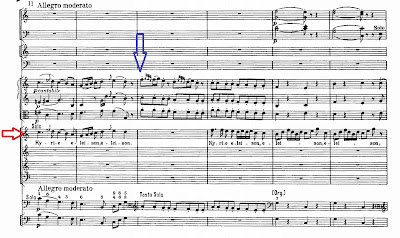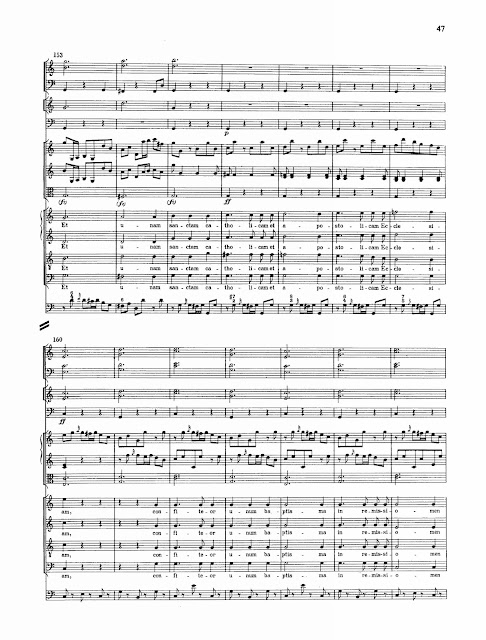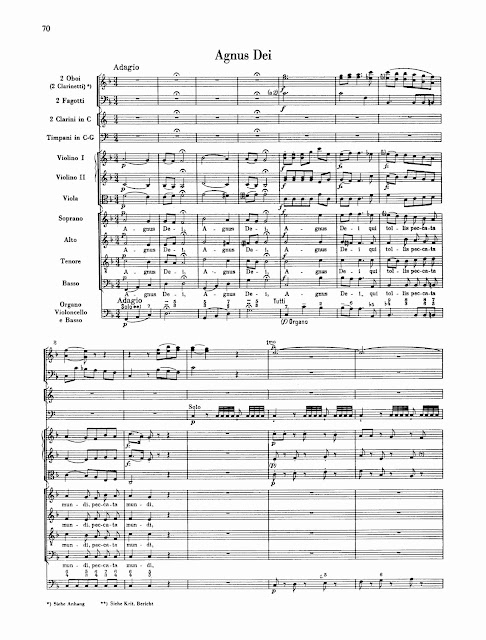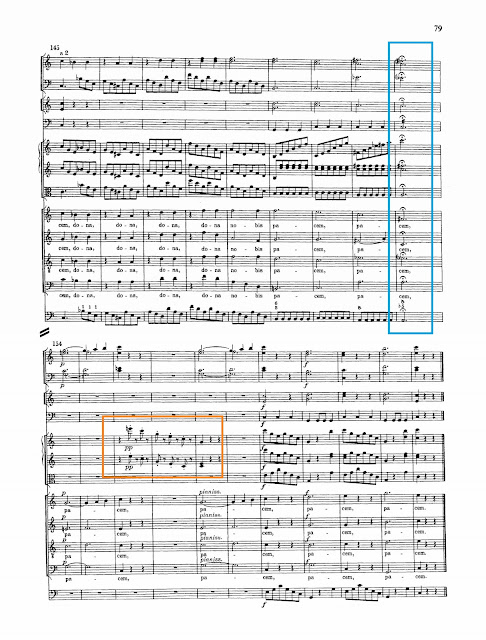CCCXXXII. HAYDN, Franz Joseph (1732-1809)
Pauken = timpani. We'll get to that later.
**
One of Haydn's duties as Kapellmeister for Prince Esterházy was to compose a mass in honor of his wife Maria's name-day.
In 1796, the Austrians were losing in a war with France. Despite being in the happy key of C Major, most of the piece has an unsettled quality to it, partially due to Haydn's dips into chromaticism.
1. Kyrie
Like a symphony, the mass opens with a short Largo passage which concludes on a chord in the tonic in the 6/4 position, before bursting into Allegro:
The principal melody is interrupted by one bar of decoration by the violins:
2. Gloria
Divided into four parts:
- Gloria in excelsis Deo
- Qui tollis peccata mundi
- Quoniam tu solus Sanctus
- Cum sancto Spiritu
The Qui tollis features an exquisite duet with a solo cello and the solo baritone in A Major:
The third section moves back to C Major, 3/4, again with tutti chorus:
which flows into the fourth part. The melismatic amen features some beautiful stretto writing:
3. Credo
Full orchestra, chorus, C Major. Abruptly changes mood to C Minor, 3/4 for another baritone solo.
Check out the decorative flourishes first in the continuo, then the violins:
4. Sanctus
Again, the Allegro preceded by a slow Adagio.
5. Benedictus
6/8; pastoral feel, moving from minor to major:
6. Agnus Dei
And here is where the sobriquet comes in. The timpani beats out the unmistakable strokes of a dark war spirit.
Haydn is still full of surprises right up until the very end:
The held diminished chord (first inversion -- vii°/V) and the light descending C Major arpeggio in the violins are little touches that make Haydn the superb craftsman that he was.

















No comments:
Post a Comment